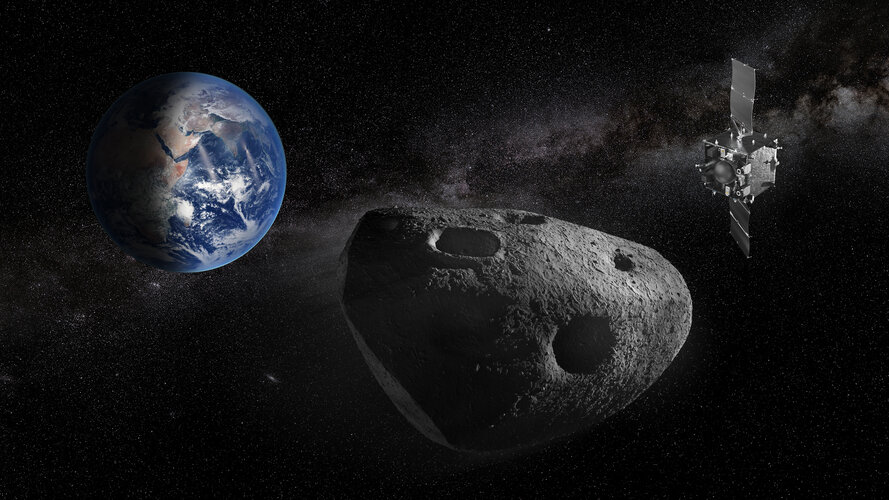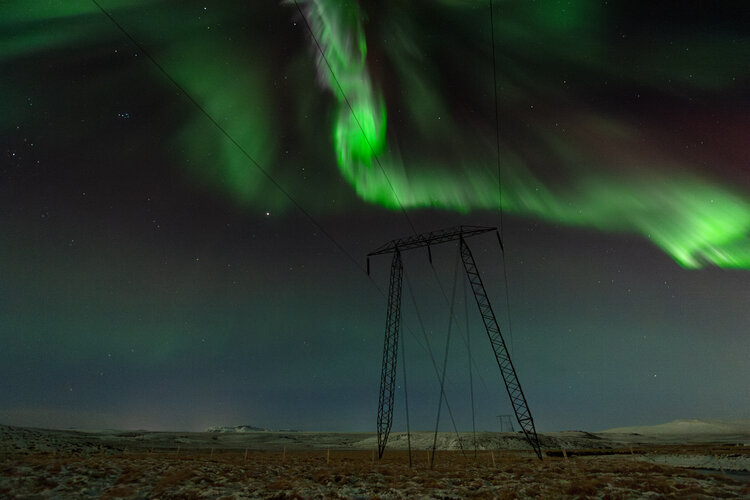
Copernical Team
Musk survives Royal Society expulsion; EU tasked to detail public funding to SpaceX, Tesla
 Tech billionaire Elon Musk has survived calls for his expulsion from the Royal Society following a crunch meeting at the elite British science institute.
However, the roughly 150 members in attendance vowed to combat "misinformation and ideologically motivated attacks" on science following Monday's closed-door talks.
It came after more than 3,000 people including Nobel prize winners sign
Tech billionaire Elon Musk has survived calls for his expulsion from the Royal Society following a crunch meeting at the elite British science institute.
However, the roughly 150 members in attendance vowed to combat "misinformation and ideologically motivated attacks" on science following Monday's closed-door talks.
It came after more than 3,000 people including Nobel prize winners sign SpaceX aims for Wednesday Starship test flight after last-minute scrub
 Elon Musk's SpaceX is now aiming for Wednesday to conduct the next test flight of its massive Starship rocket, following a last-minute cancellation on Monday.
The world's biggest and most powerful launch vehicle is set to lift off from SpaceX's Starbase facility in Boca Chica, Texas, during a launch window that opens at 5:30 pm local time (2330 GMT).
It will be Starship's eighth orbital
Elon Musk's SpaceX is now aiming for Wednesday to conduct the next test flight of its massive Starship rocket, following a last-minute cancellation on Monday.
The world's biggest and most powerful launch vehicle is set to lift off from SpaceX's Starbase facility in Boca Chica, Texas, during a launch window that opens at 5:30 pm local time (2330 GMT).
It will be Starship's eighth orbital First CubeSat joins ESA's Ramses mission to asteroid Apophis

Striking images tell the story of space weather

A compelling collection of images that illustrates humanity’s efforts to mitigate the far-reaching impacts of violent solar outbursts has been unveiled in London.
Nord Stream methane leak far bigger than estimated

The methane emitted in 2022 by the damaged Nord Stream gas pipelines was more than double the volume estimated at the time, according to a study published in Nature.
Scientists establish link between Earth's orbital shifts and ice age cycles
 Around 2.5 million years ago, Earth began experiencing alternating glacial and interglacial periods, with the last ice age concluding approximately 11,700 years ago. Now, a new study indicates that the next glaciation event could commence in about 10,000 years.
An international team of researchers, including scientists from UC Santa Barbara, has examined how subtle variations in Earth's or
Around 2.5 million years ago, Earth began experiencing alternating glacial and interglacial periods, with the last ice age concluding approximately 11,700 years ago. Now, a new study indicates that the next glaciation event could commence in about 10,000 years.
An international team of researchers, including scientists from UC Santa Barbara, has examined how subtle variations in Earth's or China advances manned lunar program for 2030 moon landing
 China is making steady strides toward its goal of landing astronauts on the moon by 2030, with research and development efforts progressing as scheduled, the China Manned Space Agency announced Monday.
According to the agency's latest update, key elements of the lunar mission-including the Long March 10 heavy-lift rocket, the Mengzhou crewed spacecraft, the Lanyue lunar lander, the Wangyu
China is making steady strides toward its goal of landing astronauts on the moon by 2030, with research and development efforts progressing as scheduled, the China Manned Space Agency announced Monday.
According to the agency's latest update, key elements of the lunar mission-including the Long March 10 heavy-lift rocket, the Mengzhou crewed spacecraft, the Lanyue lunar lander, the Wangyu Rocket Lab Space Software Aids in Successful Lunar Landing for Firefly's Blue Ghost 1 Mission
 Rocket Lab USA, Inc. (Nasdaq: RKLB) has played a key role in the successful Moon landing of Firefly Aerospace's Blue Ghost Mission 1, which touched down on March 2 at 8:34 a.m. UTC (3:34 a.m. ET). The mission relied on Rocket Lab's MAX Flight and MAX Ground Data Software suites to enable precise navigation, control, and telemetry throughout its descent and landing phases.
The Blue Ghost 1
Rocket Lab USA, Inc. (Nasdaq: RKLB) has played a key role in the successful Moon landing of Firefly Aerospace's Blue Ghost Mission 1, which touched down on March 2 at 8:34 a.m. UTC (3:34 a.m. ET). The mission relied on Rocket Lab's MAX Flight and MAX Ground Data Software suites to enable precise navigation, control, and telemetry throughout its descent and landing phases.
The Blue Ghost 1 Will neutrons compromise the operation of superconducting magnets in a fusion plant?
 High-temperature superconducting magnets made from REBCO, an acronym for rare earth barium copper oxide, make it possible to create an intense magnetic field that can confine the extremely hot plasma needed for fusion reactions, which combine two hydrogen atoms to form an atom of helium, releasing a neutron in the process.
But some early tests suggested that neutron irradiation inside a fu
High-temperature superconducting magnets made from REBCO, an acronym for rare earth barium copper oxide, make it possible to create an intense magnetic field that can confine the extremely hot plasma needed for fusion reactions, which combine two hydrogen atoms to form an atom of helium, releasing a neutron in the process.
But some early tests suggested that neutron irradiation inside a fu Nuclear fusion milestone: WEST sustains plasma for record 1,337 seconds
 The WEST tokamak, operated at the CEA Cadarache site in southern France, has set a new benchmark in nuclear fusion research by maintaining a plasma for an unprecedented 1,337 seconds on February 12. This achievement surpasses the previous record, recently established by China's EAST tokamak, by 25%.
This breakthrough is a crucial step towards the development of ITER and other next-generati
The WEST tokamak, operated at the CEA Cadarache site in southern France, has set a new benchmark in nuclear fusion research by maintaining a plasma for an unprecedented 1,337 seconds on February 12. This achievement surpasses the previous record, recently established by China's EAST tokamak, by 25%.
This breakthrough is a crucial step towards the development of ITER and other next-generati 































